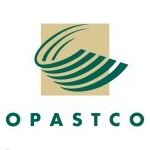 The 49th annual OPASTCO Summer Convention took place this week in Minneapolis. OPASTCO is a Washington D.C. based trade association, representing the interests of small, rural telecom providers. As to be expected, much of the meeting focused on the ongoing changes to the telecom industry, both policy wise and technically, and their impact on small rural providers.
The 49th annual OPASTCO Summer Convention took place this week in Minneapolis. OPASTCO is a Washington D.C. based trade association, representing the interests of small, rural telecom providers. As to be expected, much of the meeting focused on the ongoing changes to the telecom industry, both policy wise and technically, and their impact on small rural providers.
Perhaps Ross Petrick of telecom consulting firm VantagePoint summed up the mood of the meeting during his session, “New Business Opportunities in the Tsunami of Change from the FCC ICC/USF Reforms,” where he posed the question is the glass half full or half empty for the rural telecom industry?
Besides being a candidate for the longest session title of all time, Petrick’s subject matter highlighted the conundrum facing small telecom providers who have historically relied on the Universal Service Fund, or USF, and intercarrier compensation (sometimes referred to as access) to support the high costs associated with delivering comparable telecom and broadband services to rural and sparsely populated markets. That is, how do small companies make the best of relatively certain and potentially painful changes to those support mechanisms and march forward anyway.
Petrick pointed out some business opportunities including the digital home, cloud services, VoIP, CLEC/DLEC edge out strategies (some of which could leverage new funding mechanisms like the CAF or Connect America Fund), among others, that small carriers should explore as they develop strategies to replace revenues that may be lost as a result of USF/ICC reform. It’s ‘the glass is half full’ approach – that is, recognize policy changes are here, live with it, figure out where the opportunities are, and go for it.
It’s a great counter message to the undercurrent of ‘the glass is half empty’ perception, where pessimism rules the day, which has a strong presence at industry meetings these days. Change is never easy. Significant change and the uncertainty it engenders, like the policy reforms that are currently underway, can be downright scary. But at the end of the day, finding a path forward is the only real option. Small rural carriers are in the process of defining their individual path. Here’s hoping most of them do so through the lens of a ‘half full’ perspective.


